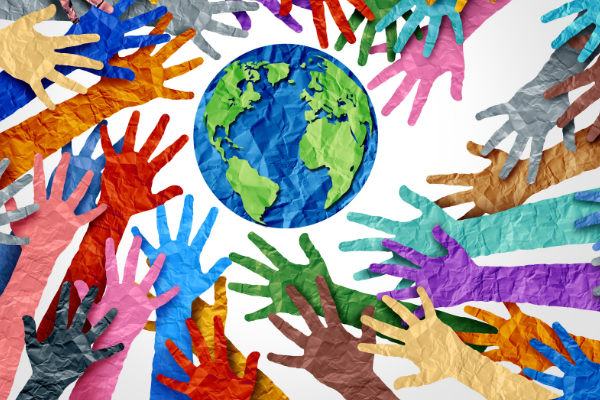
|
How would you define diversity, inclusivity and equity in Rotary? (We talked about this so if you could summarize it to an ‘elevator pitch,’ that’d be great).
Cultivating a diverse, equitable, and inclusive culture is essential to realizing Rotary’s Vision. By recognizing that individuals from certain groups have experienced barriers to membership, participation, and leadership, we commit to advancing equity in all aspects of Rotary, starting with membership, so that each person has the necessary access to resources, opportunities, networks and support to thrive. Rotary is committed to being honest and transparent about where we are in our DEI journey and continues to learn and do better.
What is the current state of diversity and inclusivity in the district? - Or more specifically, how does the district membership reflect the diversity of the demographics within our region in terms of: Gender Ethnicity/Race, Accessibility, Indigenous, Other Minorities?
We live in a very diverse district, not only in terms of ethnicity, race and colour, but also in all other areas, like: age, religion, faith, sexual orientation and gender identity, age, languages spoken, culture, disability, marital status, and socioeconomic status, as well as differences in ideas, thoughts, values, and beliefs.
When we look at the numbers that are available to us, according to Rotary Club Central, we don’t have a full picture of the demographic composition of Rotarians worldwide, or in our District. However, from the information available, we can deduce that women constitute 31% of our membership. Compared to the 36% in Zone 28 and 25% worldwide, we are somewhere in the middle. In 2017-18, our district’s percentage of female Rotarians was 22% and the number was 447, and today, it is 438. The total number has declined; however, the number of male Rotarians show a higher rate of decline from 1,140 in 2017-18 to 975 today which explains the increase from 22% to 31% for female Rotarians.
The other metric that we have through Rotary Club Central is age. This is limited by the number of members who have actually reported their birthdates in ClubRunner. From the 42% of Rotarians who have reported their age, only 17% are under the age of 40, and 64% are over the age of 60.
Looking at the numbers in both the Gender and Age categories, there is a lot of work to be done to have a more diverse membership in those areas. We haven’t looked at the other demographics. It is therefore important for us to learn as much as possible while being careful in collecting information so as not to compromise anyone’s privacy or put them in a precarious position.
Why do think there is a disparity between the actual percentage of these demographics and what the membership reflects?
If you look at the membership in a typical Rotary club in our District, it might look like it reflects the demographics in that community; however, there is not enough information to reflect the actual situation.
When we talk about Diversity, Equity, and Inclusion, it is important for us to look at equity when opening our doors for membership. We need to ask ourselves the question: “Are we giving each person who might wish to join Rotary an equal chance?” Another question is “Are we giving each Rotarian in our club the necessary access to resources, opportunities, networks and support to thrive?” Not only do we need to provide access within our Rotary world, but also with our community partnerships. When these opportunities are available to all, people feel more encouraged to participate in activities and leadership roles and then feel that they are included.
Having had many discussions with Rotarians about this issue, I have noticed that many are not engaging in the conversation because they are afraid to say the wrong thing and offend others. It is very important to encourage people to speak up and not to be afraid. The key is to provide a safe environment where this conversation can be had and discussed openly.
What are the three key priorities that the DEI committee will be focusing on to reach an ideal goal?
Our DEI committee will be fully formed by the end of October. The three key parameters that this committee will promote are:
- Engaging Rotarians in DEI conversations at Clubs and the District
- Promoting training and events that bring awareness of Rotary’s DEI initiative to our clubs
- Renewing and developing best practices in policy that echo our DEI commitments
In your capacity as a leader, what best practices have you observed in other organizations that may be facing similar disparities?
There are many things that Rotarians can do in their capacity as individuals, clubs, and clusters. In my experience, the most important thing is to start the conversation.
I was talking to a Rotarian at a RibFest, in 2019, she told me that she was so excited that there was a specific Ribber at another RibFest who offered beef and lamb ribs, which opened the opportunity for people who have pork as a dietary restriction to participate and enjoy the RibFest as well. It also gave the organizers an opportunity to raise more funds.
In the above example, someone must have mentioned to the organizing committee that there is a need to provide alternatives in order to attract more people into attending and participating in this event. Had this conversation not occurred, the idea would never have come up.
I have come across a familiar situation in many clubs. As a new member comes in, eager to serve and join committees, Rotarians who have been running those committees for a while continue to do things in their own way and do not include this member in the decision making process. Even though Rotarians have offered a place on their committee to this new member, in conditions like these the member feels excluded and ends up leaving the club!
DEI is not just about demographics, it’s about everyone.